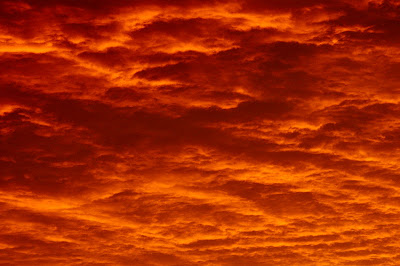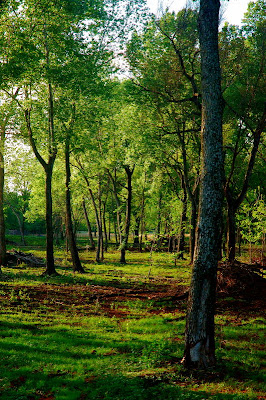











I am a landscape architecture student at the University of Oklahoma. This is a place where I can explore links and relationships of landscape and Oklahoma.















OKC's freeway design and aesthetic qualities are bland and unimaginative. Even
What about rich rusted steel? It is red, it has that gritty unfinished texture. Look at what was done with the Craigieburn Bypass.
I look at the Craigieburn Bypass and can only imagine what OKC could look like with some regional flair added to the over-sized freeway system. Land + Living has some links to the Bypass.
I'm not sure who vic roads is, but what a novel concept: connecting regional identity with managing the environment:
Managing the environment
VicRoads is committed to protecting the environment in which the Craigieburn Bypass was constructed. A Project Environmental Protection Strategy was developed and incorporated requirements to manage environmental issues and ensure the environment was given high priority during both the construction of the bypass and now that it is in operation.
Protecting local streams
To protect Merri Creek and other local streams, the Craigieburn Bypass has included a number of water treatments.Treatments such as wetlands, sedimentation basins and grass swales will capture pollutants such as oils, litter and other chemicals carried in road stormwater runoff before the water runs into the existing streams. The water treatments were designed to treat water during construction and also now that the bypass is open to traffic.
Protecting endangered species
A number of endangered species have been identified in the vicinity of the Craigieburn Bypass. These are the southern bell frog, the striped legless lizard, and the grassland earless dragon.VicRoads is committed to protecting all of these species. Special treatment has been given to preserving the southern bell frog’s habitat. A number of tunnels have been built under the bypass to allow the frogs and other small species to safely cross from one side of the bypass to the other. Mesh covers the entrance to these tunnels to stop predators such as foxes from using the crossings.
The wetland areas constructed also provide the southern bell frog with additional habitat areas along the bypass.
Protecting grasslands
A number of protected flora were identified in the vicinity of the Craigieburn Bypass. The curly sedge and matted flax-lily are two such plants, which have been actively protected in the construction of the bypass. These plants were salvaged during the early stages of the project and were divided, propagated and replanted along the bypass.It is evident that bypasses and freeways have been king in OKC. I was visiting with a Norman Parks official about habitat and wildlife. We were discussing a site that sits next to the 1-35 corridors. His comment was that there was no physical link outside of the site. And yet there are 3 culverts that extend under the 1-35 corridors. Each culvert is big enough to drive a car through. There are links. There are solutions.
OKC needs to seriously consider adding regional and local spirit along with some environmental sensibility to its freeway system. OKC is the crossroads of the U.S. and its freeway system may be its most visible elements.

This has to be the epitome of the prairie pioneer home. At least it is what lives in our imagination as the typical Oklahoman's first prairie home. Was it the typical home of the
| |
Thus, Mitchell identifies five families of image: the graphic (as in the picture), the optical (as in the mirror), the perceptual (as in cognitive sense), the mental (as in dreams, memories, and ideas), and the verbal (as in description and metaphor).